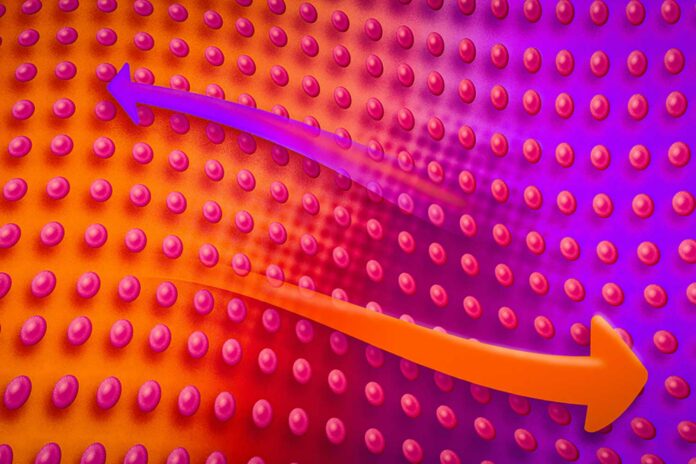Heat transport can serve as a fingerprint identifying different states of matter. In a normal liquid, a hotspot diffuses, whereas in a superfluid, heat propagates as a wave called “second sound.” Direct imaging of heat transport is challenging, and one usually resorts to detecting secondary effects.
MIT physicists have accomplished a groundbreaking feat by capturing direct images of a phenomenon called second sound for the first time.
These new images reveal how heat can travel like a wave, moving back and forth, even as the physical matter of a material behaves differently. The pictures show the pure movement of heat, separate from the material’s particles.
Imagine a tank of water with one half nearly boiling. Even though the water may look calm, the heat travels back and forth between the hot and cold sides, similar to how heat moves in a second sound.
Led by Martin Zwierlein, the team visualized the second sound in a superfluid, a special state of matter created when a cloud of atoms is cooled to extremely low temperatures. In this state, the atoms flow like a completely friction-free fluid. Theorists have predicted that heat should also flow like a wave in this superfluid state, but until now, scientists couldn’t see it directly.
The new results, published in Science, will help physicists understand how heat moves through superfluids and other materials, like superconductors and neutron stars.
The team used fermionic lithium-6 atoms cooled to nanokelvin temperatures to achieve this breakthrough. They developed a new method of thermography, a heat-mapping technique, to “see” how heat moves through the superfluid. Instead of using infrared sensors, which don’t work at ultracold temperatures, they used radio frequency to track the movement of heat.
They found that the lithium-6 fermions resonate at different radio frequencies depending on their temperature. The experiments revealed the wave-like motion of heat, sloshing back and forth, similar to sound waves. These findings will enhance our understanding of superfluids and help predict how heat flows in other materials, like high-temperature superconductors and neutron stars.
Martin Zwierlein, the Thomas A Frank Professor of Physics, said, “For the first time, we can take pictures of this substance as we cool it through the critical temperature of superfluidity and directly see how it transitions from being a normal fluid, where heat equilibrates boringly, to a superfluid where heat sloshes back and forth.”
The experiments represent a milestone as scientists have now directly imaged second sound and the pure movement of heat in a superfluid quantum gas. The researchers aim to expand their investigations to better understand heat’s behavior in various ultracold gases. Their findings can be applied to predict how heat flows in other materials that interact strongly, such as high-temperature superconductors and neutron stars.
Journal Reference:
- Zhenjie Yan, Parth Patel, Biswaroop Mukherjee et al. Thermography of the superfluid transition in a strongly interacting Fermi gas. Science. DOI: 10.1126/science.adg3430
